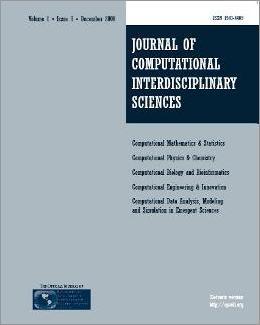
Editorial Office:
Management:
R. S. Oyarzabal
Technical Support:
D. H. Diaz
M. A. Gomez
W. Abrahão
G. Oliveira
Publisher by Knobook Pub


Editorial Office:
Management:
R. S. Oyarzabal
Technical Support:
D. H. Diaz
M. A. Gomez
W. Abrahão
G. Oliveira
Publisher by Knobook Pub
doi: 10.6062/jcis.2008.01.01.0005(Free PDF)
Ramon M. Freitas and Yosio E. Shimabukuro
This work presents a methodology that uses digital fraction images derived from Linear Spectral Mixture Model and wavelets transform from MODIS satellite sensor time-series for land cover change analysis. Our approach uses MODIS surface reflectance images acquired from 2000 to 2006 time period. For this study, a test site was selected in the Mato Grosso State, Brazilian Amazonia. This site has shown high deforestation rates in the last years. The samples of land cover classes were collected during four field campaigns (2003, 2004, 2005 and 2006) to be used as ground truth. The linear spectral mixture model was applied to the MODIS surface reflectance images of red surface reflectance band (620-670 nm bandwidth), near infrared surface reflectance band (NIR, 841-876 nm bandwidth) and medium infrared surface reflectance band (MIR, 2105-2155 nm bandwidth). This model generated the vegetation, shade, and soil fraction images. In the next step, the Meyer orthogonal Discrete Wavelets Transform was used for filtering the time-series of MODIS fraction images. The filtered signal was reconstructed excluding high frequencies for each pixel in the fraction images (soil, vegetation, and shade) of the time-series. This computational procedure allows to observe the original signal without clouds and other noises. The results show that wavelets transform can provide a gain in multitemporal analysis and visualization on inter-annual fraction images variability patterns.
MODIS, Wavelets, Fractions Images, Time-Series Analysis.
[1] ABRY P. 1997. Ondelettes et turbulence. Diderot ed., Paris, p. 268.
[2] AGUIAR APD, SHIMABUKURO YE & MASCARENHAS NDA. 1999. Use of synthetic bands derived from mixing models in the multispectral classification of remote sensing images. International Journal of Remote Sensing, 20: 647-657.
[3] CARREIRAS JMB, SHIMABUKURO YE & PEREIRA JMC. 2002. Fraction images derived from SPOT-4 VEGETATION data to assess land-cover change over the State of Mato Grosso, Brazil. International Journal of Remote Sensing, 23: 4979-4983.
[4] CARVALHO LMT. 2001. Mapping and monitoring forest remnants: a multi-scale analysis of spatio-temporal data. 140 p. Thesis Wageningen University, Wageningen.
[5] DEFRIES RS, HANSEN MC & TOWNSHEND JRG. 2000. Global continuous fields of vegetation characteristics: a linear mixture model applied to multi-year 8 km AVHRR data. International Journal of Remote Sensing, 21: 1389-1414.
[6] DEFRIES RS, HOUGHTON RA, HANSEN MC, FIELD CB & SKOLE D. 2002. Carbon emissions from tropical deforestation and regrowth based on satellite observations for the 1980s and 1990s. Proceedings of the National Academy of Sciences of the United States of America, 99(22):14256-14261, Oct. 2002. doi: 10.1073/pnas.182560099
[7] LI Z & KAFATOS M. 2000. Interannual Variability of Vegetation in the United States and its Relation to El Niño/Southern Oscillation. Remote Sensing of Environment, 71(3): 239-247. doi: 10.1016/S0034-4257(99)00034-6
[8] MEYER Y. 1992. Wavelets and operators. Cambridge Studies in Advanced Math., Cambridge Univ. Press, Cambridge, 37: 223 p.
[9] NATIONAL AERONAUTICS AND SPACE ADMINISTRATION (NASA). Monthly TRMM and Others Data Sources Rainfall Estimate. http://disc2.nascom.nasa.gov/Giovanni/tovas/TRMM V6.3B43.shtml.
[10] SAKAMOTO T, YOKOZAWA M, TORITANI H, SHIBAYAMA M, ISHITSUKA N & OHNO H. 2005. A crop phenology detection method using time-series MODIS data. Remote Sensing of Environment, 96(3-4): 366-374.
[11] SHIMABUKURO YE & SMITH JA. 1991. The least-squares mixing models to generate fraction images derived from remote sensing multispectral data. IEEE Trans. on Geosc. and Rem. Sens., pp. 16-20. doi:10.1109/36.103288
[12] SHIMABUKURO YE, BATISTA GT, MELLO EMK, MOREIRA JC & DUARTE V. 1998. Using shade fraction image segmentation to evaluate deforestation in Landsat Thematic Mapper images of the Amazon region. International Journal of Remote Sensing, 19(3): 535-541. doi: 10.1080/014311698216152